In March 2020, I wrote about competing games based on the Back to the Future movie series. The two games are due out in June 2020, and I’ve now had the chance to play and record overview videos for both of them, so I thought I’d share those videos as well as a written overview to give you a sense of how they differ in both gameplay and their takes on the original material, especially since they are both dice-based co-operative games for 2-4 players aged 10+.
Back to the Future: Dice Through Time — from designers Chris Leder, Ken Franklin, and Kevin Rodgers and publisher Ravensburger — tackles the entire BTTF trilogy and leans into the time-travel aspect of those movies.
Each player takes charge of their own DeLorean that starts at the clock tower location in one of the four movie timelines: 1885, 1955, 1985, 2015. At the start of each round, you lay out 3-8 events based on the number of players, then everyone rolls their dice, then players take all their actions in turn: moving to a different timeline, moving to different locations within a timeline, punching Biff out of the way, and (most importantly) resolving events and returning items to their proper locations within the timelines.
To get an item, you must clear all the events from a location, and to do that, you must have the icon or icons depicted on all the event cards at that location. If Biff is at the location, you must use a fist to shuttle him to another location in the same timeline before you can clear an event or return an item.
If you have all the icons needed to clear an event and you can get there, great! If not, well, maybe you can help yourself — that is, another Marty and Doc — by leaving a die on a location that can be used in a future round on that same space or during any round in that “same” space in the future. In the image above, for example, if the orange player leaves a die in the saloon, then any Marty can use this die for an action in the saloon, at Lou’s café, at Marty’s house, or at Café 80’s. (If the brown player left a die at Marty’s house, on the other hand, this die could be used only at Marty’s house or at Café 80’s since it doesn’t exist in the past.) This oblique interaction with yourself is a great representation of the tricks possible thanks to time travel.
Each round, you lay out more events than the number of players, so Dice Through Time gives you the sense of fighting a rising tide because you can’t clear the board of every event — and at the end of a round, you advance the OUTATIME marker a number of spaces equal to the timeline that has the most event-filled locations. In the image above, if this were the end of the round, the marker would advance four spaces given what’s happening in 1985, then you’d add paradox tokens to these locations; fail to clear those, and you’ll likely suffer even more next round. If the OUTATIME marker hits 12, you lose.
The only way to regain time is to return items, say getting the skateboard to Marty’s house in 1985. Do this, and you retreat the OUTATIME marker one space and gain a random Einstein token that contains an icon any player can use in the future — or the past or present.
At the start of play, you lay out 2-5 items in each year to establish the difficulty of the game. You must return all of these items before the OUTATIME clock hits 12, so returning those items matters more than anything else. The saloon in 1885 is covered with events? Who cares! Let the space-time continuum go to pot there so long as the mind-reading helmet gets to the Brown mansion.
Dice Through Time has a somewhat Pandemic-y feel in that once you lay out the events and roll the dice at the start of a round, all the info is open and players can puzzle out where they want to go in order to maximize the impact of their resources (icons) and minimize the potential damage of untouched locations that will spike your OUTATIME marker. Lightning icons allow you to re-roll unused dice, so you’re not always stuck with what you roll, and you do have the ability to use any die to move a little bit and to use any pair of matching dice as an icon of your choice. These action options increase your flexibility, but every die spent moving is a die not spent removing events, so time runs short — no matter how much you can hop back and forth through it.
For more detail, here’s a video overview:
Back to the Future: Back in Time from Funko Games and its in-house Prospero Hall design team forgoes any time-travel elements to instead give you the chance to replay the climax of the first Back to the Future movie, giving Jennifer and Einstein active (and somewhat odd) roles in the game to help Marty and Doc Brown get things to the state they need to be in order to win the game and not have Marty cease to exist.
The game lasts a set number of turns, ending when the time marker moves to 10:04 p.m. and lightning strikes. At that moment in time, you need to have the DeLorean ready to roll down the street while George and Lorraine are deep enough in love that they will continue to be an item once you return to the present day. Fail to have both of these things happening at 10:04, and you lose.
Alternatively, you can lose even faster if George and Lorraine are so distant from one another (in terms of their relationship) that the picture of Dave, Linda, and Marty fades completely. You can’t win if you don’t exist!
At the start of a player’s turn, you carry out the actions listed on the turn tracker: perhaps revealing a trouble card that sets up a complication for all players, perhaps performing a love check to see whether part of that picture vanishes, and definitely revealing a movement card that sends some combination of George, Lorraine, and Biff circling the town.
You then take actions with the powers on your player card, using them to move about town or undertake specific dice challenges. You can bring Lorraine or George (but not both) with you when you move, and you want to get them together so that you can perform an “influence love” action (while in the same space with them) to boost their relationship. Other actions include fighting Biff (yes, he’s a perpetual punching bag, but manure is not included), moving the DeLorean, and assembling the parts need to make the DeLorean ready for time travel.
All of these challenges require a die roll, with you spending powers, then rolling dice that match the colors of the power spent. Each color die matches a challenge — blue for fighting, yellow for moving, etc. — and when rolling a die, you have a one-third chance of rolling Biff, a one-third chance of a wild icon (which is a success), and a one-third chance for that icon’s specific icon, with one side of the die having two such icons (two stars, two arrows, etc.). Biffs are locked when you roll them, but you’re free to re-roll icons that don’t match what you need. If you succeed, then love increases, the DeLorean moves, and so on.
Each Biff icon — whether on a die or a movement card — sends him toward either Lorraine or George, and if he’s already on a space with one or both of them, then the love meter drops a notch for each subsequent Biff icon. Since you’re drawing a movement card each round, and two such cards in the game’s final turns, you feel like you’re building a sandcastle next to the ocean, the walls constantly crumbling on one side while you work on the other side. Sure, you can influence love and boost the relationship between Lorraine and George, but nothing stays put, making this game like Pandemic akin to how a city can be cleared of disease only to be reinfected immediately.
Progress with the DeLorean is harder to undo, although trouble cards can make that happen, but you can also get stuck proceeding in the first place since you need to collect three items in Hill Valley in order for the car to leave Doc Brown’s driveway.
To succeed with your efforts to keep all the plates spinning until time runs out, you want to undertake dice challenges against trouble cards and opportunity cards, with three of those opportunity cards always being in play. Roll the right icons while in a location with one of these cards, and you’ll gain a random power tile, possibly giving you access to two dice on one tile, a way to re-roll Biff icons, additional movement, and the ability to treat a particular icon as wild, which means those icons will always succeed for you when you spend that power.
By resolving opportunities, you can also claim item cards that give you a unique extra action available to you once each turn. Use George’s science-fiction stories for his own good!
At heart, Back in Time is an engine-building game, with each player needing to gain powers so that you can take more actions on your turn. Without doing that, you don’t have a chance of getting to all the places you need to go, never mind actually doing things in those places. Dice Through Time has everyone roll dice all at once, then figure out what you can, while Back in Time makes only one player active on a turn, with you being able to respond to each action and die roll based on what happens.
As in Dice Through Time, in Back in Time you can share your actions with others. To do this, you need to be on their location during their turn, and you can then spend any dice you have to assist them in a challenge. They need to roll at least one die of their own, and everything that you spend will then be unavailable to you on your own turn, but sometimes you need to pool your resources to ensure things get down — which is why Jennifer and Einstein have somehow made their way to 1955. Einstein even specializes in moving the DeLorean, which is a remarkable feat for a dog!
In this video overview, I run you through four complete and nearly error-free turns to give you a feel for how it all works:
The post Game Previews: Back-to-Back with Back to the Future: Dice Through Time and Back in Time appeared first on FanFareGames.
from https://boardgamegeek.com/blogpost/105255/game-previews-back-back-back-future-dice-through-t
from
https://fanfaregames.tumblr.com/post/620413153181908992

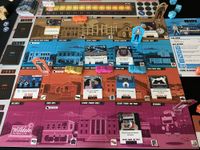
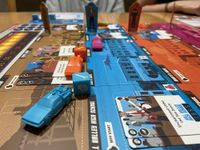
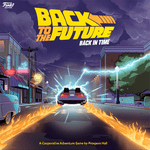
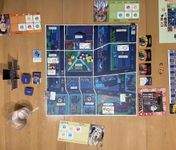
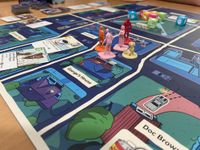
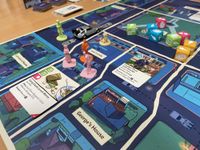
No comments:
Post a Comment